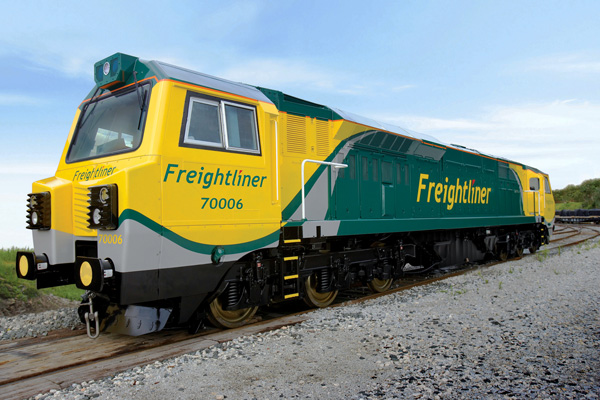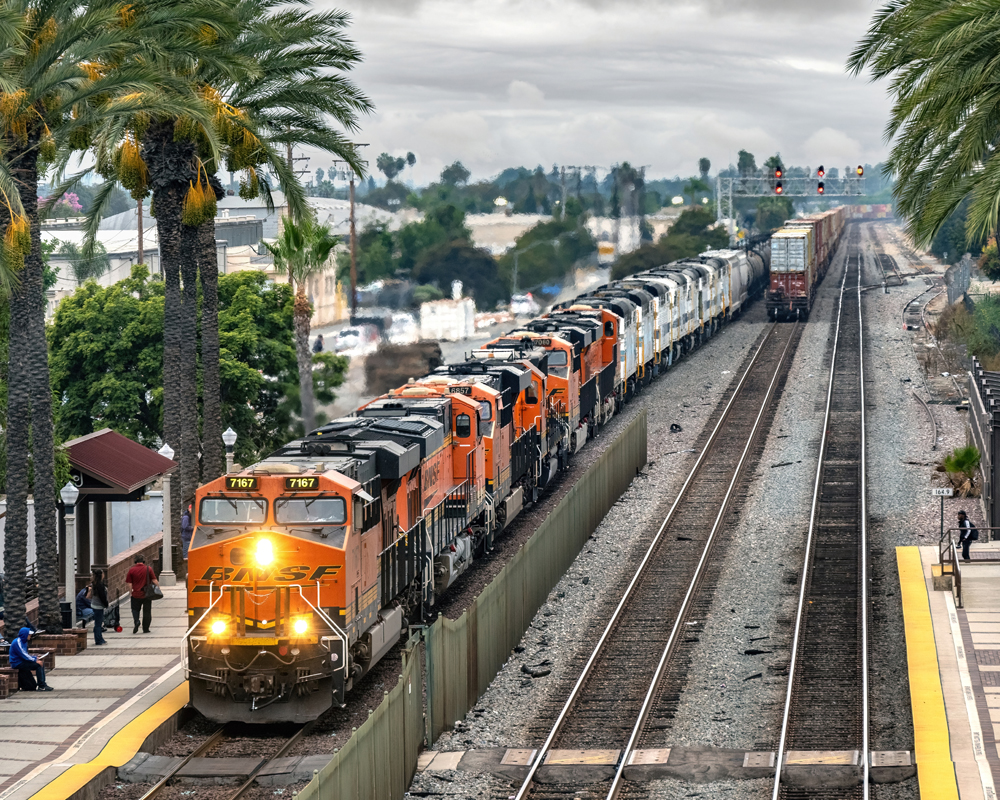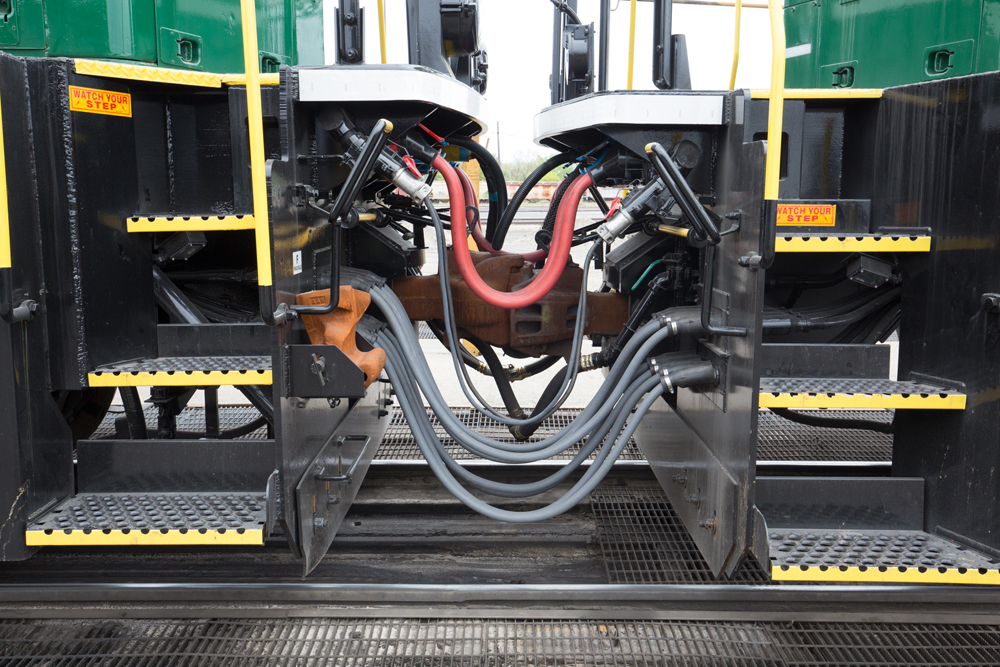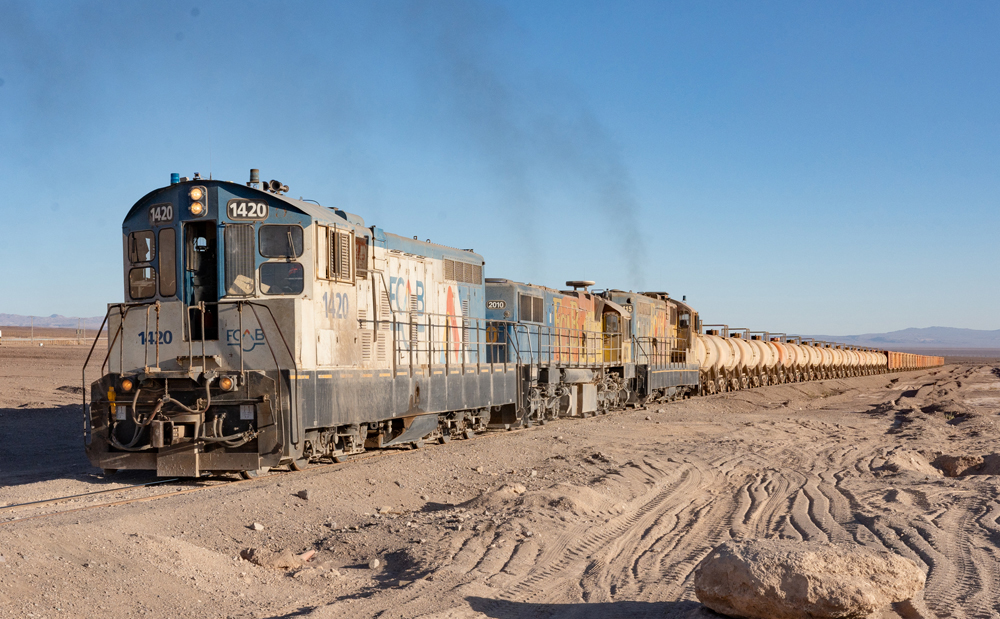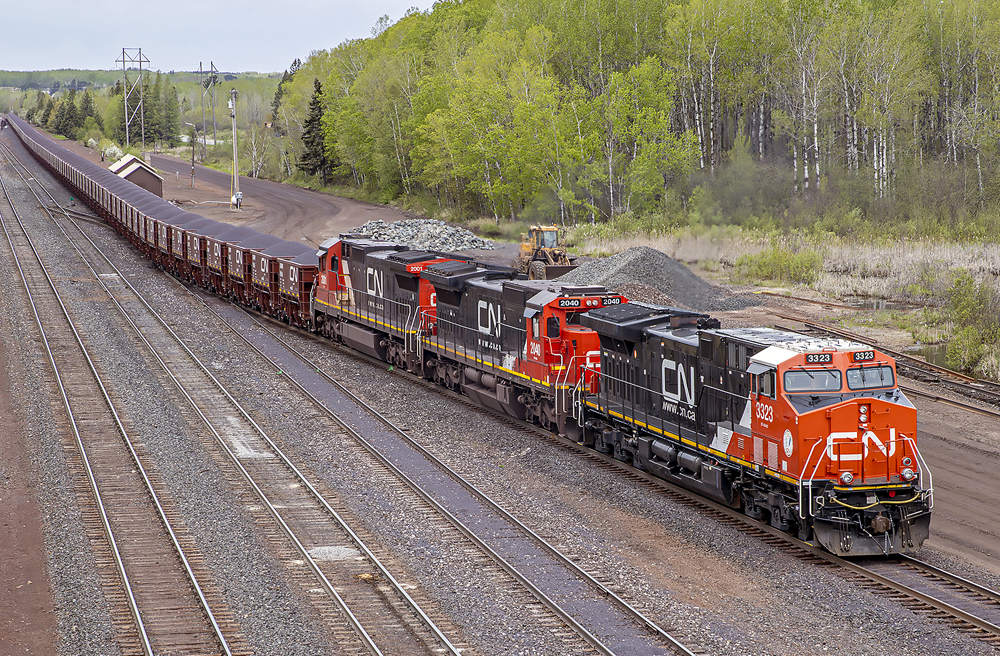The Foster Yeoman order was the start of a remarkable revolution in British freight locomotive performance, and the opening of the floodgates to further British orders from GM. Although there were some efforts to improve the reliability and availability of existing British freight locomotives, most of which were by then at the end of their useful lives, new locomotives proved the best solution to the needs of the newly privatized rail system.
English Welsh & Scottish Railway, formed by Wisconsin Central from three of the privatized companies, ordered no fewer than 250 Class 66 diesel-electric locomotives from GM. These were of essentially the same body design as the Class 59, but they used the GM 710 prime mover, and radial trucks that caused less wear to the track. EW&S’s Class 66 diesels came into service in 1998, and later that year, another freight operator in Great Britain, Freightliner, took delivery of more Class 66 locomotives in a fleet that now numbers 137 locomotives, all but nine of which operate in Britain. Since then, three other freight operators have invested in the class, and GM has produced a new version for use in mainland Europe.
The impetus to these purchases was the poor reliability of the locomotives inherited from British Rail. Among them was the Class 47, introduced in 1963 and showing signs of its age. Freightliner, for example, found that the class had a casualty rate of one every 7,000 miles, where a “casualty” means a locomotive-caused delay of more than 30 minutes. Freightliner pioneered a rebuild of some Class 47 locomotives by replacing the prime mover with an EMD 645. The rebuild improved the casualty rate to one per 30,000 miles, but it was not good enough for the competitive environment introduced by privatization. Freightliner’s purchase of the Class 66 enabled them to realize a casualty rate of one per 77,000 miles, 11 times better than the Class 47.
Freightliner’s productivity has risen greatly thanks to EMD’s Class 66 locomotives. Growth of the company could not have taken place at the rate achieved without significant improvement in locomotive performance, Tim Shakerley, engineering director of Freightliner, says. Motive power, crew, fuel, and maintenance costs are essentially the same for all freight operators in the U.K., and locomotive performance and utilization are just about the only source of competitive edge available. British freight operators are free to compete on the system operated by Network Rail, and none of them have their own company-owned routes where they can operate in monopoly.
British and U.S. railroads differ in another sense as well: In Britain, passenger trains dominate, with 24,000 passenger trains operated each day. Freight operators are regarded as secondary to the needs of the timetabled passenger services. Freightliner was originally different from EW&S, and while EW&S (now part of Deutsche Bahn, and renamed DB Schenker) has always operated general freight movements, Freightliner was privatized out of the container-carrying business operated by British Railways. Since privatization, however, each has moved somewhat into the operations of the other: DB Schenker carries containers and Freightliner carries aggregates, coal, oil products, and other bulk traffic. The competition between them is very real, and the economical and effective operation of modern motive power is the battlefield.
The Freightliner Class 66 locomotives are subjected to heavy overhaul at the company’s own shops at Leeds, England. The timing of overhauls is determined by a combination of mileage, elapsed time, and megawatt output. All of these are recorded on the on-board EMDEC, a standard GM computer. The locomotive carries a diagnostics computer, which has to be examined on board; it is not equipped for remote access of diagnostics data. Lighter repairs are carried out in the field, but such is the reliability of the locomotive that they are few in number. Some such repairs involve GM, through their Electromotive Services organization.
Five British companies now operate Class 66 diesels, all driven by the competitive spur EWS created with its purchase of such a large fleet, but the monopoly of modern motive power established by the Class 66 is soon to be broken. A new class is to appear, to be imported later this year by Freightliner, from General Electric in Erie, Pa. This will be a six-axle locomotive with A.C. traction motors, offering 3,700 hp in comparison with the 3,300 hp of the Class 66. Thirty are on order, and they will offer 75-mph operation. The new locomotives have been ordered against a sound business case that has survived the recent economic turmoil in Great Britain and elsewhere. As much of Freightliner’s business is in carrying deep-sea containers, it is acutely aware of economic influences on the deep sea shipping trade.
The new locomotives will be used on both container traffic, of which Freightliner currently operates 550 trains per week, and heavy haul (of aggregates, minerals, etc.) of 1,050 trains per week.
As in America, the greater competition is the road. While little mineral or heavy bulk traffic goes by road, the omnipresent truck, operating on a heavily subsidized road network, takes about 70 percent of container traffic in Great Britain. The rail system, by comparison, takes 23 percent, and the remainder is sea traffic. Price drives the market, and so here again, the effectiveness of the locomotive is at the core of competitive service. Freightliner found that the Class 66 enabled it to move away from its earlier hub-and-spoke service operated through Crewe and its classification yards, and offer real competition on timely and reliable service for shippers. However Freightliner is also the nation’s fifth-largest road operator, for uniquely it offers the service of road collection and delivery of containers. It does all of this with a payroll of about 2,000 people, 80 percent of whom are in the operating department, and the remainder of whom are in engineering, commercial and administration. They operate several terminals, and generate a turnover of about £250 million ($400 million) a year.
Freightliner is therefore also a major customer of Network Rail, the owner of the railway infrastructure, with a large number of timetabled paths for its trains bought and in place. Most of these are within the passenger-dominated timetable, although parts of some routes are on freight-only branch lines, such as to the all-important docks at Felixstowe and Southampton. When Freightliner needs a new path, however, it has to find it within the timetable, and go to Network Rail to buy it: Network Rail does not seek customers for its spare capacity.
All of this may seem to be a very strange operating environment to American eyes, but it is the brave new world in which railways have been operated since privatization in 1994. As ever, railroaders have proved adaptable to it, but that does not mean that the system is not ready for improvement.





